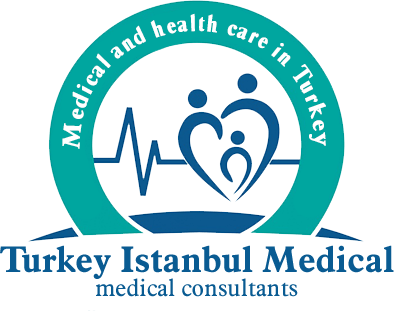What is Lymph Cancer (Lymphoma)?
Lymphoma, also known as lymphoma or lymph node cancer, is in the “blood cancer” group according to its disease type. Lymph cancer has a relatively large weight among blood cancers. In this direction; Approximately 50% of people with blood cancer are diagnosed with lymphoma. To understand what effect lymph cancer has, it is first necessary to understand what the lymph system is.
Lymphatic system; It is a system formed by the union of lymph nodes and many different vascular networks, and within which the fluid called “lymph fluid” circulates. Due to its structural features, the lymph system contains white blood cells that serve to fight against various microorganisms that can enter the body from outside and cause disease.
Likewise, the lymph nodes within the system act as a kind of filter and prevent viruses, harmful bacteria or similar microorganisms from spreading into the body. However, in some cases, uncontrolled proliferation of these cells, which make up the lymph system and are called lymphocytes, may occur. This disrupts the functioning of the lymph system and leads to the development of lymph cancer (lymphoma).
What are The Types of Lymph Cancer (Lymphoma)?
What is Hodgkin Lymphoma (HL)?
Hodgkin lymphoma is the name given to the type of cancer that occurs in the lymphatic system, which is a part of the immune system. In this disease, cells in the lymphatic system grow abnormally. And they can spread beyond the lymphatic system. As Hodgkin lymphoma disease progresses, the body’s ability to fight infection slowly deteriorates.
Hodgkin lymphoma is one of the two most common types of cancer seen in the lymphatic system. Recent positive developments in the diagnosis and treatment of Hodgkin lymphoma allow people diagnosed with the disease to recover.
What is Non-Hodgkin Lymphoma (NHL)?
Non-Hodgkin lymphoma is the name given to the type of cancer that lies outside the lymphatic system. Non-Hodgkin’s disease does not consist of a single disease but a group of diseases.
More than one factor is effective in the development of the disease. NHL is more common in people whose immune system is congenitally low or due to some acquired diseases (EBV, HIV, HHV8, HTLV-1). Apart from these, the use of some effective drugs may cause Non-Hodgkin to occur in people working in the paint and leather industry. Long-term exposure to pesticides used against insects and plants used in agricultural areas may also affect the occurrence of NHL in people.
What are The Most Common Types of Non-Hodgkin Lymphoma?
-
Slowly Progressing Lymphomas
- Follicular Lymphoma
- Chronic Lymphocytic Leukemia
- Immunocytoma
-
Rapidly Progressing Lymphomas
- Diffuse Large B Cell Lymphoma
- Most of T Lymphomas
- Mantle Cell Lymphoma
-
Very Rapidly Progressing Lymphomas
- Burkitt Lymphoma
- Lymphoblastic B Lymphoma
- Lymphoblastic T Lymphoma
-
Slowly Progressing (Indolent) Lymphomas:
The disease is usually diagnosed in stage III or IV.
If the disease is diagnosed in stage I or II, treatment is performed with the aim of eradicating the disease with radiation therapy.
In advanced stages, chemotherapy is applied in certain cases. If this is not necessary, the patient is monitored without treatment. Because in these cases, starting treatment before necessary does not provide an advantage to the patient.
In B-cell indole lymphomas, a drug called Rituximab, which targets the CD20 molecule on B-lymphoma cells, increases the effect of chemotherapy and significantly affects response rates and response times
-
Rapidly Progressing (Aggressive) Lymphomas:
Diffuse large B-cell lymphomas constitute a significant proportion of aggressive lymphomas.
Treatment is applied with the aim of completely eradicating the disease.
It consists of Rituximab and CHOP chemotherapy.
In T-cell aggressive lymphomas, the addition of Etoposide to the CHOP protocol (CHOEP protocol) increases the success rate, as shown by German and Scandinavian studies.
Since the prognosis is poor in most T-cell aggressive lymphomas, high-dose chemotherapy and autologous stem cell transplantation, following 6 cycles of chemotherapy, play an important role in the permanent control of the disease.
Mantle cell lymphoma, on the other hand, is equivalent to an aggressive lymphoma in which important progress has been made in recent years.
In young patients, drug treatment is primarily prescribed.
After this treatment, stem cells are collected from the patient. High-dose therapy and stem cell transplantation give the best results.
In elderly patients, maintenance treatment after chemotherapy prolongs life.
-
Very Rapidly Progressing Lymphomas:
Another group is very aggressive lymphomas.
The most important are Burkitt lymphoma and lymphoblastic lymphomas.
These types of lymphoma occur mostly in young patients.
Burkitt lymphoma is the fastest growing type of cancer in humans.
The goal of treatment in these diseases is to eliminate the disease.
However, this goal cannot be achieved with simple treatments.
The disease can be permanently eliminated with chemotherapy, which consists of many drugs and is reminiscent of leukemia treatment.
What Causes Lymph Cancer (Lymphoma)?
In an individual with lymphoma, the white blood cells in the lymphatic system mutate and grow rapidly. And it turns into cancer cells that don’t die.
This causes too many diseased, ineffective cells to multiply uncontrollably in the lymph nodes. And it causes swelling of the lymph nodes, liver and spleen. As with most types of cancer, the factors that cause mutation are not known for certain.
However, cases such as the following have been shown to be a risk factor for the development of lymphoma cancer:
What are The Factors That İncrease The Risk of Hodgkin Lymphoma?
-
Age:
Patients diagnosed with Hodgkin lymphoma are most often between the ages of 20 and 30 or older than 55 years.
-
Gender:
Men are at greater risk for this type of lymphoma.
-
Family Story:
The risk of developing this disease is increased in people whose close relatives have Hodgkin lymphoma.
-
Immunodeficiency:
People infected with the virus called HIV have an increased risk of developing lymphoma.
What are The Risk Factors for Non-Hodgkin Lymphoma?
-
Immunodeficiency:
Immunodeficiency that develops as a result of HIV infection or long-term immunosuppressive drug use is a risk factor for NHL.
-
Autoimmune Diseases:
The risk of NHL is increased in people with some autoimmune diseases such as celiac disease and rheumatoid arthritis.
-
Gender:
While some types of NHL are more common in men, some types are more common in women.
-
Infection:
Infection due to microorganisms such as Epstein Barr Virus (EBV), Hepatitis C, Helicobacter pylori, HTLV-1 increases the risk of NHL.
-
Chemical or Radiation Exposure:
Exposure to chemicals, such as pesticides or herbicides, or nuclear radiation also increases the risk of NHL.
-
Obesity:
Although obesity is thought to increase the risk of NHL, research on this subject continues.
What are The Symptoms of Lymph Cancer (Lymphoma)?
Symptoms of lymphoma may vary depending on the type of cancer, its stage and the characteristics of the patient.
Below are some of the common lymphoma symptoms:
-
Swelling in Lymph Nodes:
Lymph cancer usually causes abnormal swelling in the lymph nodes. This swelling may be painless or slightly painful. Swelling of lymph nodes in the neck, armpit, or groin area may be noticed.
-
General Weakness and Fatigue:
Lymphoma patients may often feel weak, fatigued or exhausted. These symptoms may result from the cancer’s effect on the body.
-
Fever and Night Sweats:
Lymphoma may be associated with febrile conditions such as fever and night sweats. These symptoms usually occur when the cancer progresses or spreads.
-
Weight Loss:
Sudden weight loss is a common symptom in lymphoma patients. This weight loss can happen inexplicably.
-
Itching:
Some lymphoma patients may experience an itching sensation on their skin. This itching can often occur in different parts of the body.
-
Skin Changes:
Lymphoma may cause symptoms such as skin discoloration, spots, or rashes.
-
Shortness of Breath:
As a result of the enlargement of lymph nodes or organs, it can put pressure on the chest cavity and cause shortness of breath.
-
Abdominal Swelling and Pain:
Enlargement of lymph nodes in the abdominal area can cause swelling and pain. Digestive problems may also occur.
-
Bone Pains:
Bone pain may occur when lymphoma progresses or affects the bone marrow.
These symptoms are common findings that can be seen in case of lymphoma. However, each patient may react in different ways.
If you have any one or more of these symptoms, it is important to consult a healthcare professional. Diagnosis and treatment of lymph cancer should be performed by a specialist oncologist.
What are The Stages of Lymph Cancer (Lymphoma)?
The stages of lymphoma are generally as follows:
-
Stage 1:
There is involvement in a single lymph node area, or in a single lymphoid structure in the spleen, thymus or nasal area, or in a single area outside the lymph.
-
Stage 2:
More than one lymph node area is involved on the same side of the diaphragm.
Lymphomas that involve a single non-lymph node organ on the same side of the diaphragm or the lymph nodes in that area and surrounding areas can also be classified as stage 2.
-
Stage 3:
Lymphoma involving the lymph node areas on both sides of the diaphragm is classified as stage 3.
This involvement may be accompanied by spleen involvement or involvement of an organ other than a regional lymph node.
-
Stage 4:
There is widespread involvement in tissues and organs. If one or more non-lymph node organ involvement is detected in more than one focus, the disease is classified as stage 4.
How is Lymph Cancer (Lymphoma) Diagnosed?
Tests and procedures used to diagnose lymphoma include:
-
Physical Examination:
Your doctor may examine your body to look for signs of enlarged lymph nodes.
-
Removing the Lymph Node for Examination:
Your doctor may recommend a lymph node biopsy to remove all or part of a lymph node for examination in the laboratory.
Advanced tests can determine whether lymphoma cells are present and what types of cells are involved.
-
Blood Tests:
Blood tests that determine the number of cells in a blood sample taken from you can give your doctor clues about your diagnosis.
-
Taking a Bone Marrow Sample for Examination:
A bone marrow biopsy and aspiration procedure involves inserting a needle into your hip bone to obtain a sample of bone marrow. This sample is analyzed to look for lymphoma cells.
-
Imaging Tests:
Imaging tests can be used to look for signs of lymphoma in other areas of the body.
These tests may include CT, MRI and positron emission tomography (PET).
How is Lymph Cancer (Lymphoma) Treated?
In the treatment of lymphoma:
- Chemotherapy
- Chemotherapy and radiation that directly target lymphoma
- Biological treatments, such as antibodies directed against lymphoma cells
- Stem Cell Transplant
methods are used.
Treatment Methods for Non-Hodgkin Lymphoma Are:
- Administering chemotherapy to kill cancer cells
- High energy beam radiation therapy to destroy cancer cells
- Immunotherapy, which uses the body’s immune system to attack cancer cells
- Targeted therapy by targeting characteristics of lymphoma cells to prevent and/or stop the growth of cancerous cells
The methods used in the treatment of Hodgkin lymphoma are as follows:
- Chemotherapy
- Radiation Therapy
- İmmunotherapy
If these treatment options do not work, a stem cell transplant may be considered.
Although very high doses of chemotherapy kill cancer cells, they can also destroy blood cells in the bone marrow that make new blood cells.
Therefore, a stem cell transplant is performed to replace these lost blood cells with new ones.






